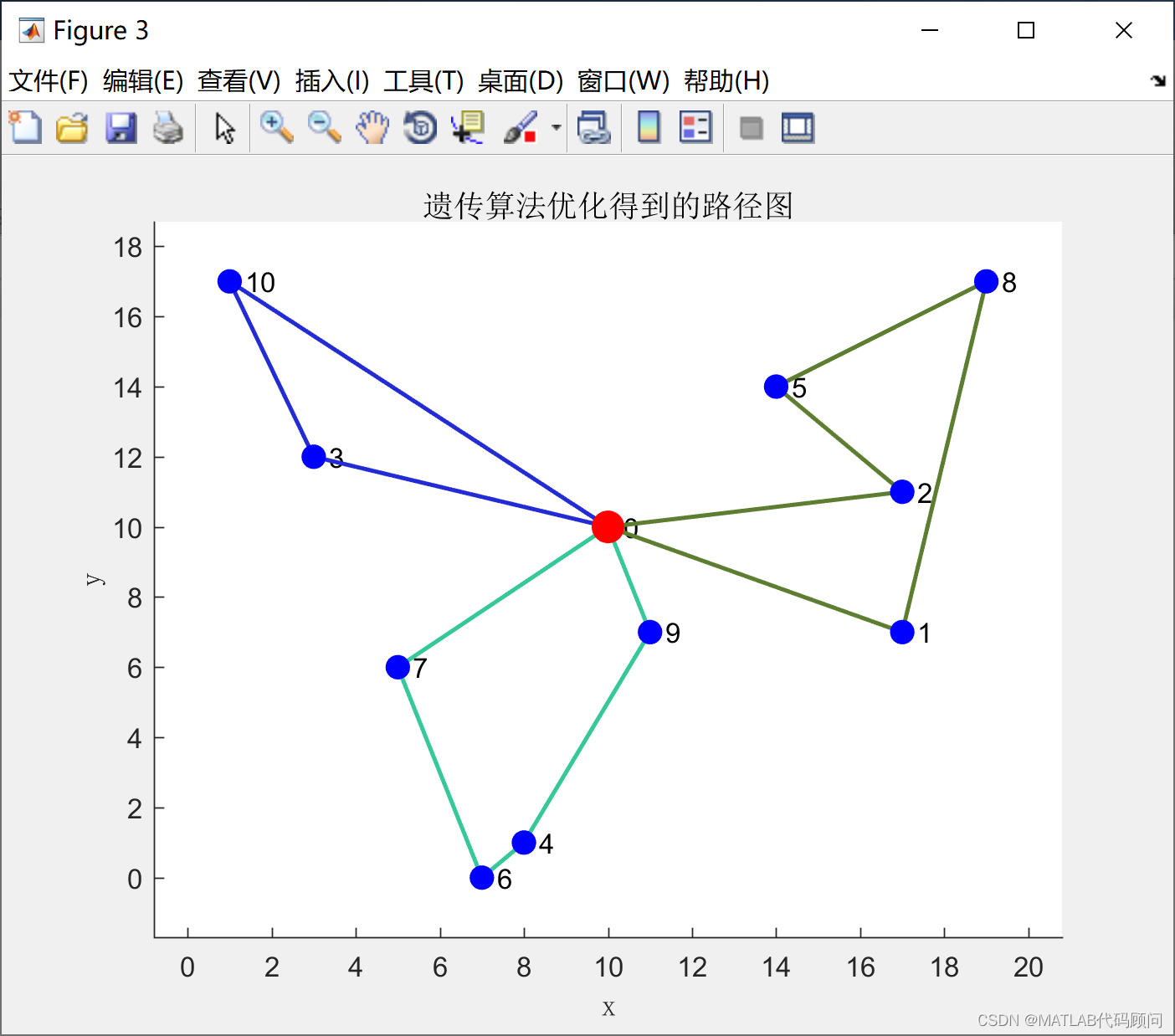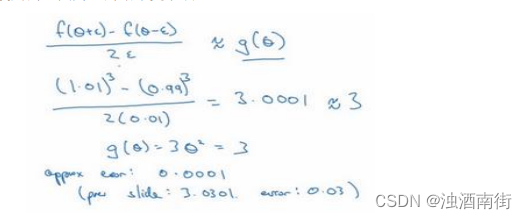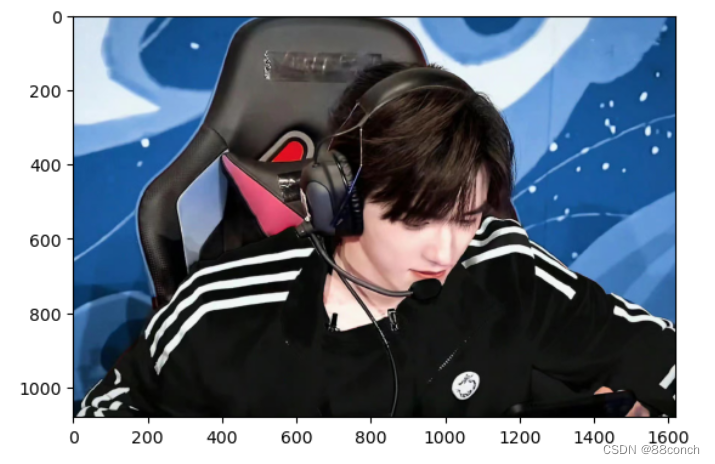前言
仅记录学习过程,有问题欢迎讨论
- 声音的本质是一种波,将波按时间段切分为很多帧,之后进行声学特征提取,每一帧转化为向量。
应用-输入法:
- 按照语言模型给出概率最高的候选词
语言模型的分类:
-
统计语言模型 (SLM) S = Statistics: ngram语言模型等(成句概率)
-
马尔可夫假设:假设第n个词出现的概率,仅受其前面 “有限” 个词的影响
-
平滑(折扣)问题:遇见没见过的句子,概率也不应该为0
-
解决方案–回退:当三元组abc未出现时,找bc二元组的概率(* 概率值 0.4)
-
PPL(判断标准) : 困惑度 和 成句概率成反比----相对值
-
-
神经语言模型(NLM) N = Neural: rnn语言模型等
- 语言模型的核心能力是计算成句概率(打标点符号,数字归一化,文本纠错)
- 效果比统计类型好,但是速度相对没它这么快
-
预训练语言模型(PLM) P = Pre-train: Bert、GPT等
-
大语言模型(LLM) L = Large: ChatGPT等
代码
n-gram 统计型demo
import math
from collections import defaultdictclass NgramLanguageModel:def __init__(self, corpus=None, n=3):self.n = nself.sep = "_" # 用来分割两个词,没有实际含义,只要是字典里不存在的符号都可以self.sos = "<sos>" # start of sentence,句子开始的标识符self.eos = "<eos>" # end of sentence,句子结束的标识符self.unk_prob = 1e-5 # 给unk分配一个比较小的概率值,避免集外词概率为0self.fix_backoff_prob = 0.4 # 使用固定的回退概率self.ngram_count_dict = dict((x + 1, defaultdict(int)) for x in range(n))self.ngram_count_prob_dict = dict((x + 1, defaultdict(int)) for x in range(n))self.ngram_count(corpus)self.calc_ngram_prob()# 将文本切分成词或字或tokendef sentence_segment(self, sentence):return sentence.split()# return jieba.lcut(sentence)# 统计ngram的数量def ngram_count(self, corpus):for sentence in corpus:word_lists = self.sentence_segment(sentence)word_lists = [self.sos] + word_lists + [self.eos] # 前后补充开始符和结尾符for window_size in range(1, self.n + 1): # 按不同窗长扫描文本for index, word in enumerate(word_lists):# 取到末尾时窗口长度会小于指定的gram,跳过那几个if len(word_lists[index:index + window_size]) != window_size:continue# 用分隔符连接word形成一个ngram用于存储ngram = self.sep.join(word_lists[index:index + window_size])self.ngram_count_dict[window_size][ngram] += 1# 计算总词数,后续用于计算一阶ngram概率self.ngram_count_dict[0] = sum(self.ngram_count_dict[1].values())return# 计算ngram概率def calc_ngram_prob(self):for window_size in range(1, self.n + 1):for ngram, count in self.ngram_count_dict[window_size].items():if window_size > 1:ngram_splits = ngram.split(self.sep) # ngram :a b cngram_prefix = self.sep.join(ngram_splits[:-1]) # ngram_prefix :a bngram_prefix_count = self.ngram_count_dict[window_size - 1][ngram_prefix] # Count(a,b)else:ngram_prefix_count = self.ngram_count_dict[0] # count(total word)# word = ngram_splits[-1]# self.ngram_count_prob_dict[word + "|" + ngram_prefix] = count / ngram_prefix_countself.ngram_count_prob_dict[window_size][ngram] = count / ngram_prefix_countreturn# 获取ngram概率,其中用到了回退平滑,回退概率采取固定值def get_ngram_prob(self, ngram):n = len(ngram.split(self.sep))if ngram in self.ngram_count_prob_dict[n]:# 尝试直接取出概率return self.ngram_count_prob_dict[n][ngram]elif n == 1:# 一阶gram查找不到,说明是集外词,不做回退return self.unk_probelse:# 高于一阶的可以回退ngram = self.sep.join(ngram.split(self.sep)[1:])return self.fix_backoff_prob * self.get_ngram_prob(ngram)# 回退法预测句子概率def calc_sentence_ppl(self, sentence):word_list = self.sentence_segment(sentence)word_list = [self.sos] + word_list + [self.eos]sentence_prob = 0for index, word in enumerate(word_list):ngram = self.sep.join(word_list[max(0, index - self.n + 1):index + 1])prob = self.get_ngram_prob(ngram)# print(ngram, prob)sentence_prob += math.log(prob)return 2 ** (sentence_prob * (-1 / len(word_list)))if __name__ == "__main__":corpus = open("sample.txt", encoding="utf8").readlines()lm = NgramLanguageModel(corpus, 3)print("词总数:", lm.ngram_count_dict[0])print(lm.ngram_count_prob_dict)print(lm.calc_sentence_ppl("c d b d b"))rnn demo 预测句子的分类
(需要语料可留言)
import torch
import torch.nn as nn
import math
import os
import random
import torch.utils.data as data_util
import numpy as np"""
import torch
import torch.nn as nn
import math
import os
import random
import torch.utils.data as data_util
import numpy as np"""week 6--语言模型
通俗来说就是人话统计语言模型----=N-gram
成句概率-》 词w1--wn 按顺序出现的概率
马尔可夫假设:假设第n个词出现的概率,仅受其前面 “有限” 个词的影响P(今天天气不错) = P(今)*P(天|今) *P(天|今天) *P(气|天天) *P(不|天气) *P(错|气不)平滑(折扣)问题
遇见没见过的句子,概率也不应该为0
解决方案:回退:当三元组abc未出现时,找bc二元组的概率(* 概率值 0.4)若是P(word) 都不存在: 加1平滑(count数+1)/// 低频词替换为【unk】 都当做<unk>处理插值:计算高阶的概率时,同时考虑低阶的概率 Pw1|wn-1 wn-2 = aP(w1|wn-1 wn-2) + bp(w1|wn-1) + cP(wn)PPL : 困惑度 和 成句概率成反比----相对值"""# 实现一个判断文本是否该领域的模型 根据ppl大小
class LanguageModel(nn.Module):def __init__(self, input_dim, vocab):super(LanguageModel, self).__init__()self.emb = nn.Embedding(len(vocab) + 1, input_dim)self.rnn = nn.RNN(input_dim, input_dim, batch_first=True)# 输出为字表的长度 代表可能性为任何一个字 因为是预测self.linear = nn.Linear(input_dim, len(vocab) + 1)self.drop = nn.Dropout(0.1)self.loss = nn.functional.cross_entropydef forward(self, x, y=None):x = self.emb(x) # output shape:(batch_size, sen_len, input_dim)x, _ = self.rnn(x) # output shape:(batch_size, sen_len, input_dim)# x 取最后一个x = x[:, -1, :] # output shape:(batch_size, input_dim)x = self.drop(x)y_pred = self.linear(x)if y is not None:return self.loss(y_pred, y) # [1*vocab_size] []else:# 需要归一化处理return torch.softmax(y_pred, dim=-1)def build_vocab(vocab_path):# set dictvocab = {}with open(vocab_path, encoding="utf8") as f:for index, line in enumerate(f):char = line[:-1] # 去掉结尾换行符vocab[char] = index + 1 # 留出0位给pad tokenvocab["\n"] = 1return vocabdef build_simple(corpus, window_size, vocab):start = random.randint(0, len(corpus) - 1 - window_size)end = start + window_sizewindow = corpus[start:end]# 窗口后一个字符target = corpus[end]x = [vocab.get(char, vocab["<UNK>"]) for char in window]y = vocab[target]return x, ydef build_dataset(simple_size, corpus, window_size, vocab):x = []y = []for i in range(simple_size):dataset_x, dataset_y = build_simple(corpus, window_size, vocab)x.append(dataset_x)y.append(dataset_y)return torch.LongTensor(x), torch.LongTensor(y)# 读取文件
def load_corpus(corpus_path):return open(corpus_path, encoding="utf8").read()def train(corpus_path, save_weight=True):epoch_num = 10 # 训练轮数batch_size = 128 # 每次训练样本个数train_sample = 10000 # 每轮训练总共训练的样本总数char_dim = 128 # 每个字的维度window_size = 6 # 样本文本长度vocab = build_vocab("D:\\NLP\\test\\week6\\vocab.txt") # 建立字表corpus = load_corpus(corpus_path) # 加载语料model = LanguageModel(char_dim, vocab) # 建立模型x, y = build_dataset(train_sample, corpus, window_size, vocab)dataset = data_util.TensorDataset(x, y)dataiter = data_util.DataLoader(dataset, batch_size)# gpuif torch.cuda.is_available():model = model.cuda()optim = torch.optim.Adam(model.parameters(), lr=0.001) # 建立优化器for epoch in range(epoch_num):# start trainingmodel.train()epoch_loss = []# x.shape == 20*5 y_true.shape == 20for x, y_true in dataiter:# print(x, y_true)# 交叉熵需要传递整个x,y过去,而非单个的loss = model(x, y_true)# print(loss)# 反向传播过程,在反向传播过程中会计算每个参数的梯度值loss.backward()# 改變權重;所有的 optimizer 都实现了 step() 方法,该方法会更新所有的参数。optim.step()# 将上一轮计算的梯度清零,避免上一轮的梯度值会影响下一轮的梯度值计算optim.zero_grad()epoch_loss.append(loss.data)print("=========\n第%d轮平均loss:%f" % (epoch + 1, np.mean(epoch_loss)))if not save_weight:returnelse:base_name = os.path.basename(corpus_path).replace("txt", "pth")model_path = os.path.join("D:\\NLP\\test\\week6\\model", base_name)torch.save(model.state_dict(), model_path)returndef train_all():for path in os.listdir("../week6/corpus"):corpus_path = os.path.join("D:\\NLP\\test\\week6\\corpus", path)print(corpus_path)train(corpus_path)# def cal_ppl(sentence, model, vocab, window_size):
# prob = 0
# model.eval()
# with torch.no_grad():
# for i in range(1, len(sentence)):
# start = max(0, i - window_size)
# window = sentence[start:i]
# x = [vocab.get(char, vocab["<UNK>"]) for char in window]
# x = torch.LongTensor([x])
# target = sentence[i]
# target_index = vocab.get(target, vocab["<UNK>"])
# if torch.cuda.is_available():
# x = x.cuda()
# pred_prob_distribute = model(x)[0]
# target_prob = pred_prob_distribute[target_index]
# prob += math.log(target_prob, 10)
# return 2 ** (prob * (-1 / len(sentence)))# 计算文本ppl (rnn 无需回退 因为输出的softmax自带平滑)
def cal_ppl(sentence, model):prob = 0with torch.no_grad():for i in range(1, len(sentence)):start = max(0, i - model.window_size)window = sentence[start:i]x = [model.vocab.get(char, model.vocab["<UNK>"]) for char in window]x = torch.LongTensor([x])target = sentence[i]# 目标值的下标target_index = model.vocab.get(target, model.vocab["<UNK>"])if torch.cuda.is_available():x = x.cuda()pred_prob_distribute = model(x)[0]# 对应的概率是多少target_prob = pred_prob_distribute[target_index]# print(window , "->", target, "prob:", float(target_prob))prob += math.log(target_prob, 10)return 2 ** (prob * (-1 / len(sentence)))
# if __name__ == '__main__':
# train_all()# ============================== implement =============================
def load_trained_language_model(path):char_dim = 128 # 每个字的维度,与训练时保持一致window_size = 6 # 样本文本长度,与训练时保持一致vocab = build_vocab("D:\\NLP\\test\\week6\\vocab.txt") # 加载字表model = LanguageModel(char_dim, vocab) # 加载模型model.load_state_dict(torch.load(path)) # 加载训练好的模型权重model.eval()if torch.cuda.is_available():model = model.cuda()model.window_size = window_sizemodel.vocab = vocabreturn model# 加载训练好的所有模型
def load_models():model_paths = os.listdir("D:\\NLP\\test\\week6\\model")class_to_model = {}for model_path in model_paths:class_name = model_path.replace(".pth", "")model_path = os.path.join("D:\\NLP\\test\\week6\\model", model_path)class_to_model[class_name] = load_trained_language_model(model_path)return class_to_model# 基于语言模型的文本分类伪代码
# class_to_model: {"class1":<language model obj1>, "class2":<language model obj2>, ..}
# 每个语言模型,用对应的领域语料训练
def text_classification_based_on_language_model(class_to_model, sentence):ppl = []for class_name, class_lm in class_to_model.items():# 用每个语言模型计算pplppl.append([class_name, cal_ppl(sentence, class_lm)])ppl = sorted(ppl, key=lambda x: x[1])print(sentence)print(ppl[0: 3])print("==================")return pplsentence = ["在全球货币体系出现危机的情况下","点击进入双色球玩法经典选号图表","慢时尚服饰最大的优点是独特","做处女座朋友的人真的很难","网戒中心要求家长全程陪护","在欧巡赛扭转了自己此前不利的状态","选择独立的别墅会比公寓更适合你",]class_to_model = load_models()
for s in sentence:text_classification_based_on_language_model(class_to_model, s)plm Demo 待补充
#






